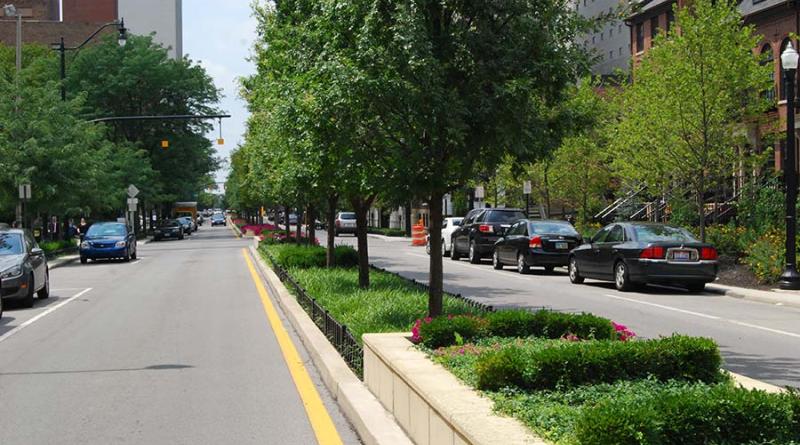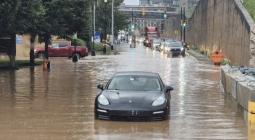Living Cities: How to stop city trees from tumbling

TOPPLED TREES: Madrid was just one of many cities hit by Storm Ciáran last week: Record-breaking winds toppled over 400 trees in the Spanish capital, one of which crushed a 23 year-old woman who died of her injuries. The fatality has raised questions about how to better manage urban trees and make sure they don’t become a deadly threat during major storms.
Keep them in good health: In an interview, Mariano Sánchez, head of gardening and trees at the Spanish National Research Council’s Royal Botanical Gardens research institute, told me the urban trees that fall during storms tend to be in poor health already, usually as a result of bad pruning practices. “Pruning cuts in most species end up generating rot in the wood, which then becomes soft and more likely to break in strong winds,” he explained. Trees in public spaces are often pruned excessively to avoid them obstructing windows or traffic lights, and these cuts are often carried out by people who aren’t properly trained. “Ideally, arborists should be professionals, and the pruners ought to be certified to evaluate risks in trees during inspections,” he said.
|
Record-breaking winds toppled over 400 trees in Madrid | Oscar del Pozo/AFP via Getty Images |
Let them grow: The concrete and asphalt that fills most urban landscapes also make trees more vulnerable. “They stop trees from developing an adequate root system, from having good anchorage … Below ground, a tree’s roots should be able to extend across an area similar to the crown we see outside,” Sánchez explained. While trees are essential for combatting urban heat, “they must be large and leafy” to be effective, as their canopy absorbs heat and prevents “the sun from reaching the sidewalk or asphalt.”
Plant the right ones: Sánchez also cautioned that the increase in severe weather events linked to climate change means authorities need to carefully consider what types of trees they plant and how they care for them year-round. “These new high-speed, gusty winds will require greater management depending on each species,” he said. “But there are no bad trees: You just have to know them and plant them in the most suitable places.”
SEISMIC TROUBLES: Naples is in danger of suffering devastating damage from a major earthquake, according to the Italian government. The city lies near the Campi Flegrei supervolcano, which has registered increased seismic activity as a result of movement in underground magma chambers this year. On Wednesday, Environment Minister Nello Musumeci informed the mayors of Naples, Bacoli, Pozzuoli, Monte di Procida, Quarto, Giugliano and Marano that over 85,000 of their inhabitants live in a “red zone” that may be disproportionately at risk to those quakes; more than 3,300 public and private buildings in Naples alone fall within that high-risk area.
What’s the plan? Now that the “red zone” has been laid out, the Italian government wants to launch a major analysis of the buildings in the area and figure out their vulnerability. Technical inspections are set to be carried out while a protocol is developed to keep people safe. Last September the region experienced a 4.2 magnitude earthquake, the worst to hit in 40 years.






